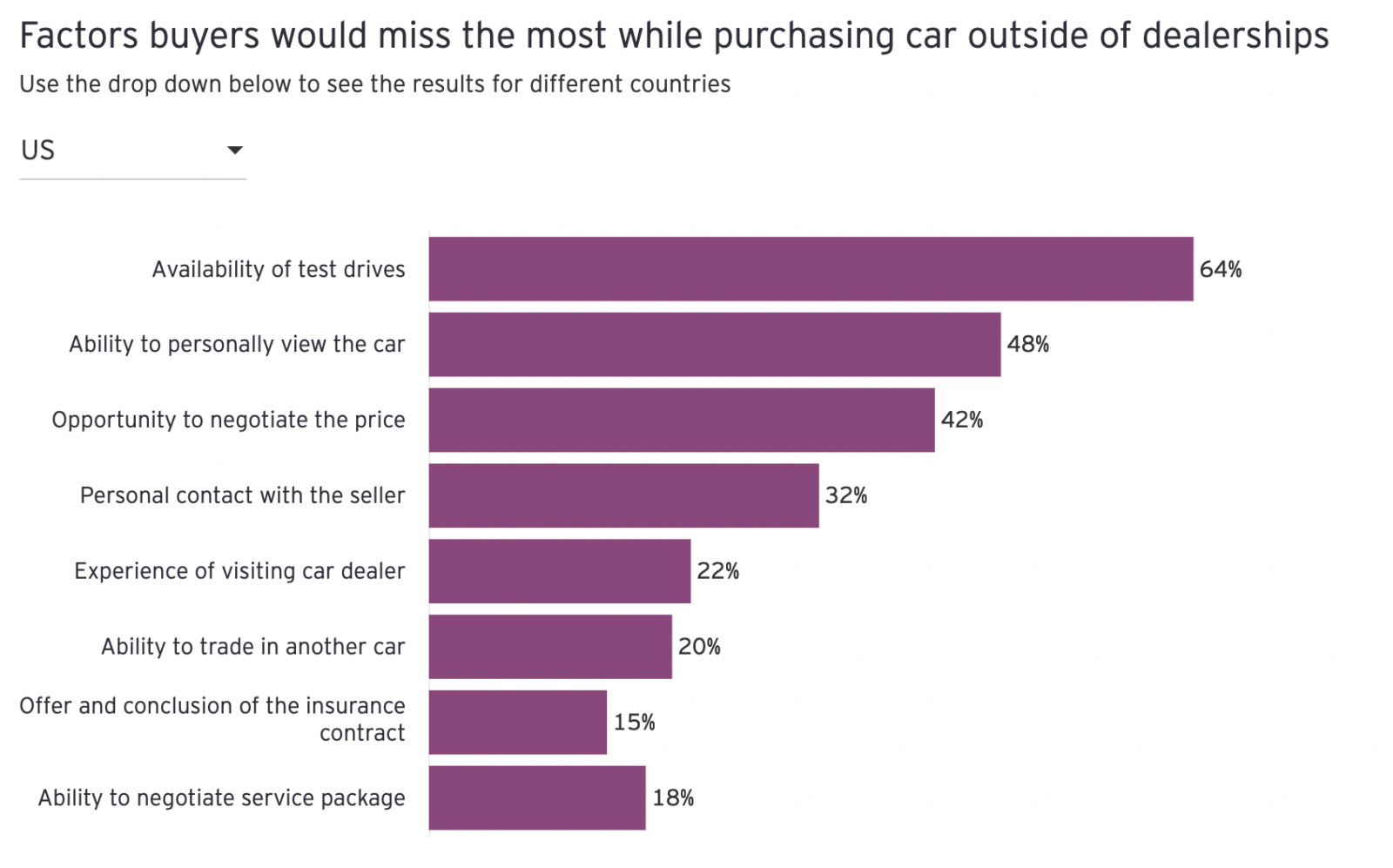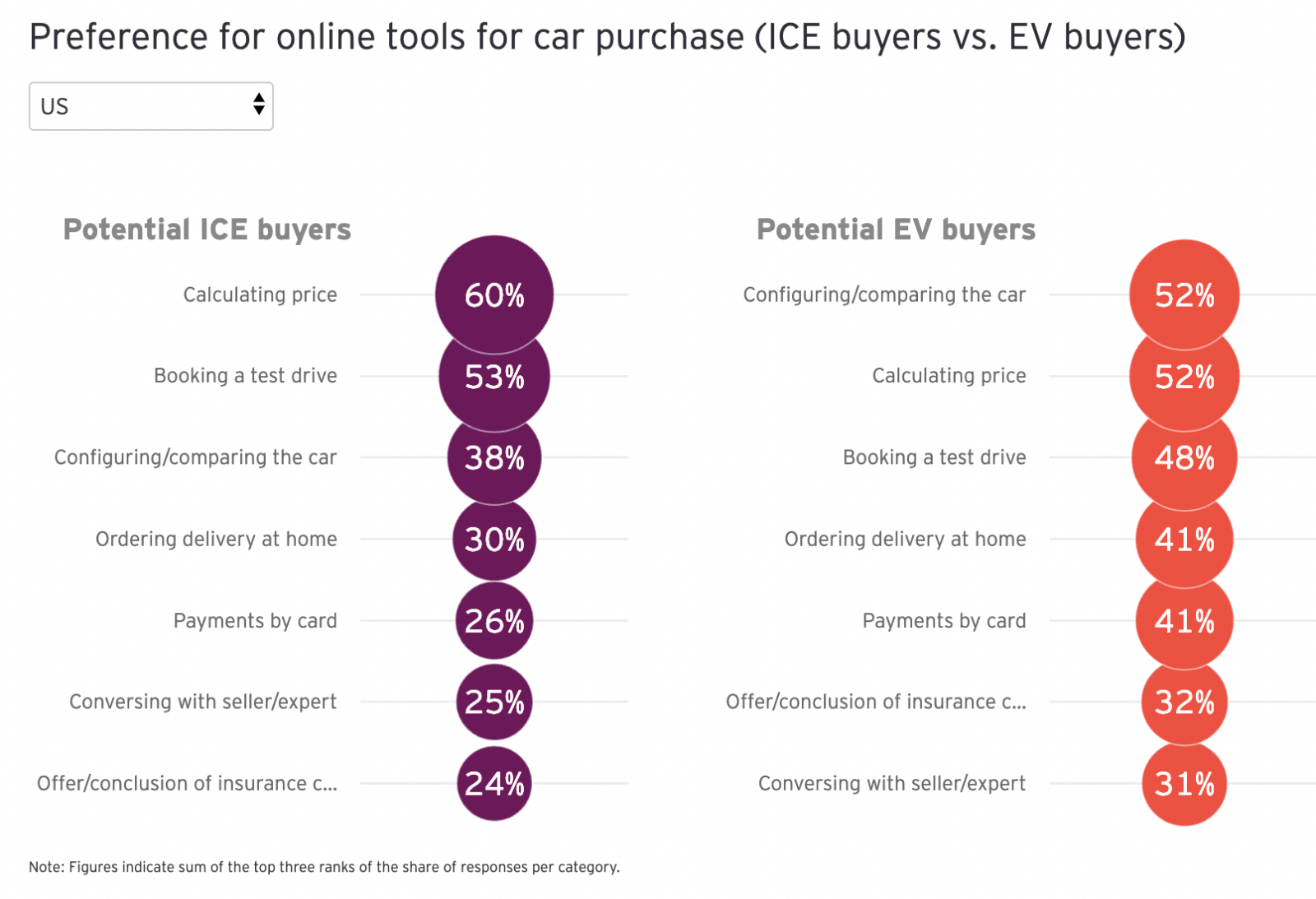 Merging digital communication skills with offline/in-person skills will be one of the most challenging endeavors for automotive retailers. Automotive retail is a fast-changing environment, and consumer preferences are all over the map. Retailers are facing challenges serving customers because there is no “one size fits all” car purchase journey.
Merging digital communication skills with offline/in-person skills will be one of the most challenging endeavors for automotive retailers. Automotive retail is a fast-changing environment, and consumer preferences are all over the map. Retailers are facing challenges serving customers because there is no “one size fits all” car purchase journey.
In a fascinating new Mobility Consumer Index study, the new era of automotive retail calls for an enhanced skillset within the workforce, management and at the manufacturer level. The formula includes boosting employee digital proficiency, whether working in an experience center or in a traditional showroom. OEMs will need to provide ongoing digital and technical training if they are to successfully integrate retailer’s online and offline experiences.
Enhanced skills include digital literacy and digital fluency.
Digital literacy refers to the ability to understand certain kinds of digital technology in the workplace. This was uber important over the past 20+ years as dealerships became computerized, email became integral to car deals and websites grew more and more advanced as consumers wanted to shop online.
Advanced dealership management systems are now commonplace and the workforce has become reliant on technology to perform their jobs. It’s difficult to imagine a dealership today without dealership management systems, CRMs, or service diagnostics software.
Today’s automotive retail employees need more than digital literacy, they need digital fluency.
Digital fluency is the employees’ ability to understand the technology well enough to easily switch between platforms, comprehend which online tools will help them, and apply lessons learned in one platform to the other platforms they use.
Digital is a different language. Customers are speaking it, and salespeople better be, too. Those who are fluent in another language don’t just comprehend it, they are able to use it on the fly, adapt it to their current conversation, and use it in creative ways to reach their goals.
Employees must develop their “digital fluency” to build customer rapport.
With a myriad of online channels available to connect with car buyers, salespeople who want to sell more use these platforms to build rapport with both in-market shoppers, past customers and of course, their entire network. During the pandemic and the ensuing supply chain/vehicle inventory issues, salespeople were mostly order-takers.
But now that things are loosening up, and inventories are beginning to level out, it’s becoming clear that sales teams must now work on their skills within the selling process – often that includes guiding the customer through the buying process.
We’re also facing additional challenges in the form of higher interest rates, which are quickly pricing some buyers out of certain models and even new cars in general. If a salesperson was new to automotive retail and was hired in the past two years, there’s a very good chance she/he has a sales skills deficit.
Training will be at the forefront.
Dealers and their manufacturer partners would be smart to develop training protocols to upskill salespeople and managers to become “digitally fluent.” Sales teams could be trained to become masterful at meeting the car buyer where they are, develop rapport and be adept at moving the sale forward, whether that’s online or offline.
Today’s digital dealership encompasses all the technologies the workforce uses to perform their duties in today’s consumer driven retail environment. Salespeople especially will need training and development in processes to build rapport, answer customer questions, and help customers buy a car – all using digital tools – as well as the traditional email, phone and in-person interactions.
Training and development of sales managers is key.
I’m connected to many car salespeople who are digitally savvy. In fact, I conducted a social selling/digital communications training program where the salespeople were 100% on board. The obstacle was the sales managers, who saw no benefit in it whatsoever.
Managing salespeople is a demanding job, especially in this fluid market where everything is in flux. We are living in a unique time period that most car people have never experienced. I grew up in the car business and I’ve never seen so many challenges to the core business model.
When challenges rise, and things are changing fast, support is a welcome action. Staff should be trained to convey transparency in this fluid market. Not everyone is looking for an Amazon experience but how much marketshare can be gained by adapting to that type of experience?
Essential points to consider with designing training curriculum:
- Key to online selling is process and a well-trained strategy.
- “Click and Mortar” approach: address time traps in operations – trade in, credit, paperwork. When the customer is looking for that type of convenience – do you offer that?
- Is there a clear understanding of the value? How confident are you of your staff being able to convey that value story?
- Online tools convey ease and transparency. Is the experience the same offline – does the showroom offer the same transparency and convenience?
Merging the digital and physical improves customer interaction and satisfaction.
From the MCI study: While the use of online channels as an adjunct to offline is the norm now, the in-person experience remains important throughout the car buyer’s journey.
Car buyers are looking for a digital-first experience, but one that offers the convenience of online with the reassurance of personal interaction with expert dealer staff.
- Over 60% of all car buyers, regardless of drive chain choice, prefer to visit a dealer for pre-purchase and purchase stages.
- 63% prefer a dealer interaction for information gathering, and the same proportion prefer a dealer to experience the car physically.
- 64% of new car buyers prefer to purchase from a dealer rather than online.

57% of all car buyers and 60% of EV buyers said they intend to buy their next car from a dealer. Many dealers have already evolved from offering physical-only to physical-plus-online customer experiences. They must continue that process to provide an even more digitally-enabled experience, while retaining the personal elements that customers value highly.
This includes integrating both virtual and face-to-face elements into an integrated journey that takes the customer from pre-purchase digital brochures and virtual product tours through developing specs, ordering and the sale itself to after-sales support — all in a completely seamless way.
Car buyers expect to use digital tools
Study: Consumers are increasingly open to using quick and convenient digital tools for at least some parts of the sales process. Well over 60% of buyers said that they would be interested in booking a test drive and working out the price of a new car online, for example, while around 50% would use an online configurator to spec a car.
EV buyers are consistently more likely to use digital tools than ICE (Internal Combustion Engine) buyers. This may reflect a more “digital” mindset among EV buyers, but it is also likely to be that EVs are a relatively novel purchase compared to ICE vehicles. Consumers thus seek out more information and reassurance when buying an EV than they do a more familiar ICE vehicle.

Enhanced workforce digital skills are required for this new era of auto retailing.
It’s clear that digital is where automotive retail is headed. A workforce with refined, advanced digital skills has a better opportunity to capture the sale.
OEMs will need to provide ongoing digital and technical training if they are to successfully integrate both online and offline. My hope is that manufacturers will continue to look ahead and recognize the urgency for training budgets and superior digital sales training for their dealers.
This is the third of four sponsored articles exploring the results of the Ernst + Young MCI study, along with my own insights on how those results can be useful to retailers’ automotive digital retail strategy. Contact me here for guidance or questions.
